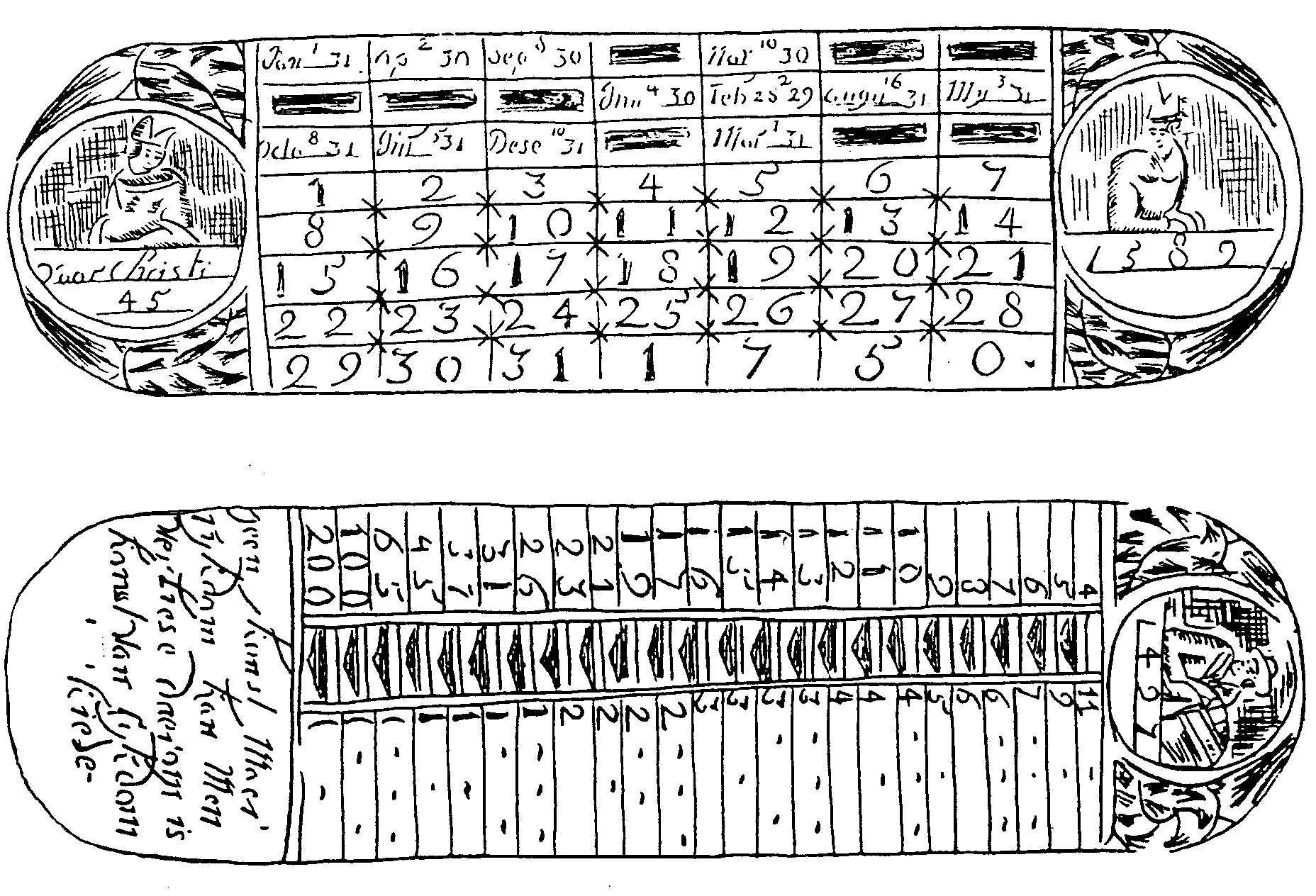
Collectors of tobacco boxes and nautical antiques may be familiar with 18th- and early 19th-century Dutch seaman’s tobacco boxes associated with Pieter Holm (1685/86-1776), a retired Swedish seaman who in the 1720s settled in Amsterdam and from about 1737 onwards operated a nautical school called Regt door Zee (i.e. “Sailing a Straight Course”).
Although these tobacco boxes were never signed, they appear to made in Iserlohn (Germany) from where they were shipped to Amsterdam and sold at Pieter Holm’s nautical school. Whether the calendrical and nautical information was already engraved on the boxes in Iserlohn or were added later in Amsterdam is not known. The manufacture and sale of these boxes continued long after the death of Pieter Holm in 1776 and the latest known copies date from 1817. A typical example of a Pieter Holm tobacco box, dated 1750, is shown below.

These tobacco boxes, usually made of copper and brass and measuring 12 to 18 cm in length, feature a perpetual calendar on the top of the lid and a ship’s speed table on the bottom which Holm in a 1748 publication claims to have devised in 1729. The top of the lid is further adorned with simple vignettes portraying Julius Caesar and Pope Gregory XIII, who respectively in 45 BC and AD 1582 introduced the Julian calendar and the Gregorian calendar.
The bottom usually carries a simple vignette of a person with a globe and a pair of dividers with the year 1497 who is tentatively identified as Amerigo Vespucci. Usually, the bottom also carries one of the following short Dutch texts: